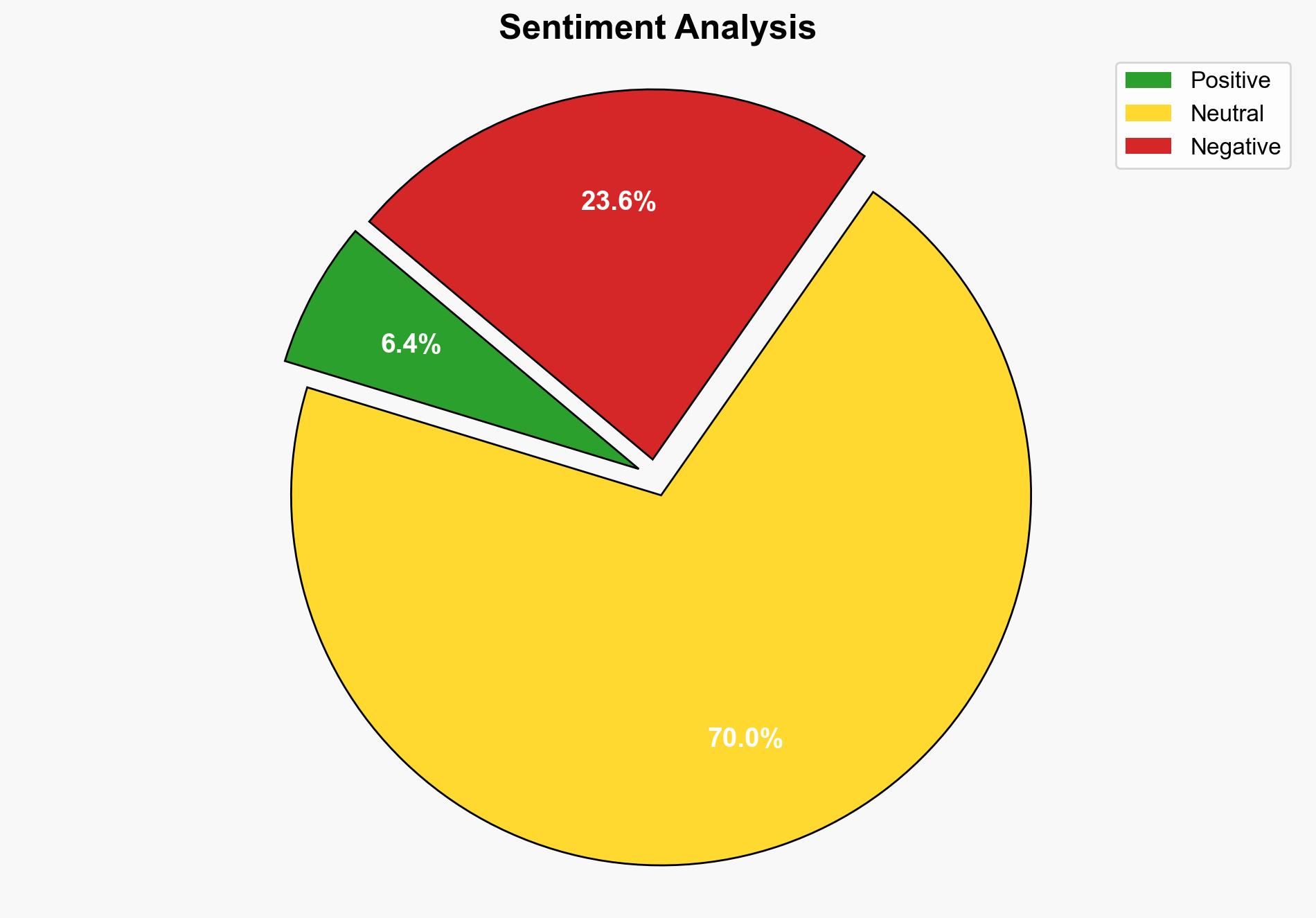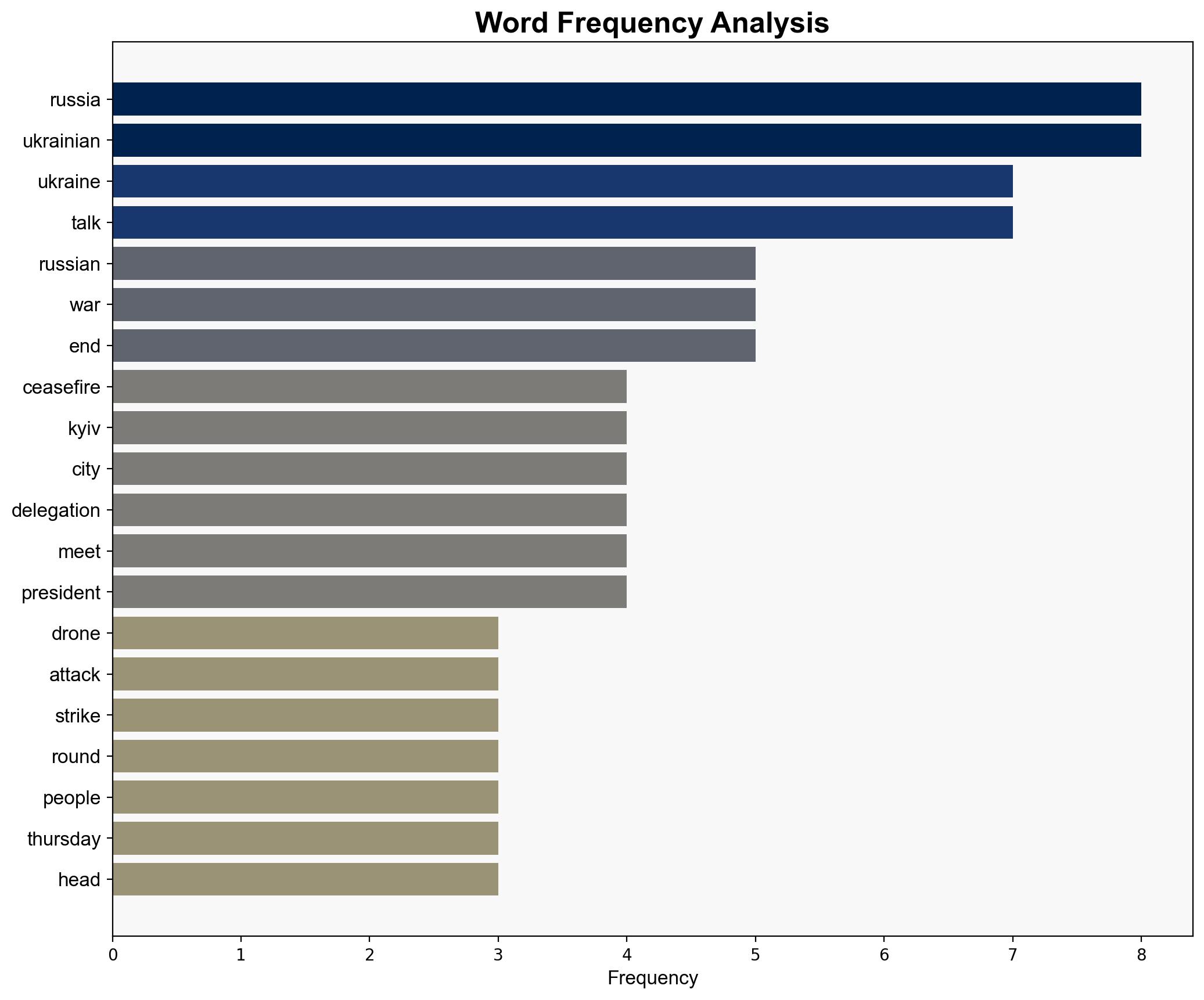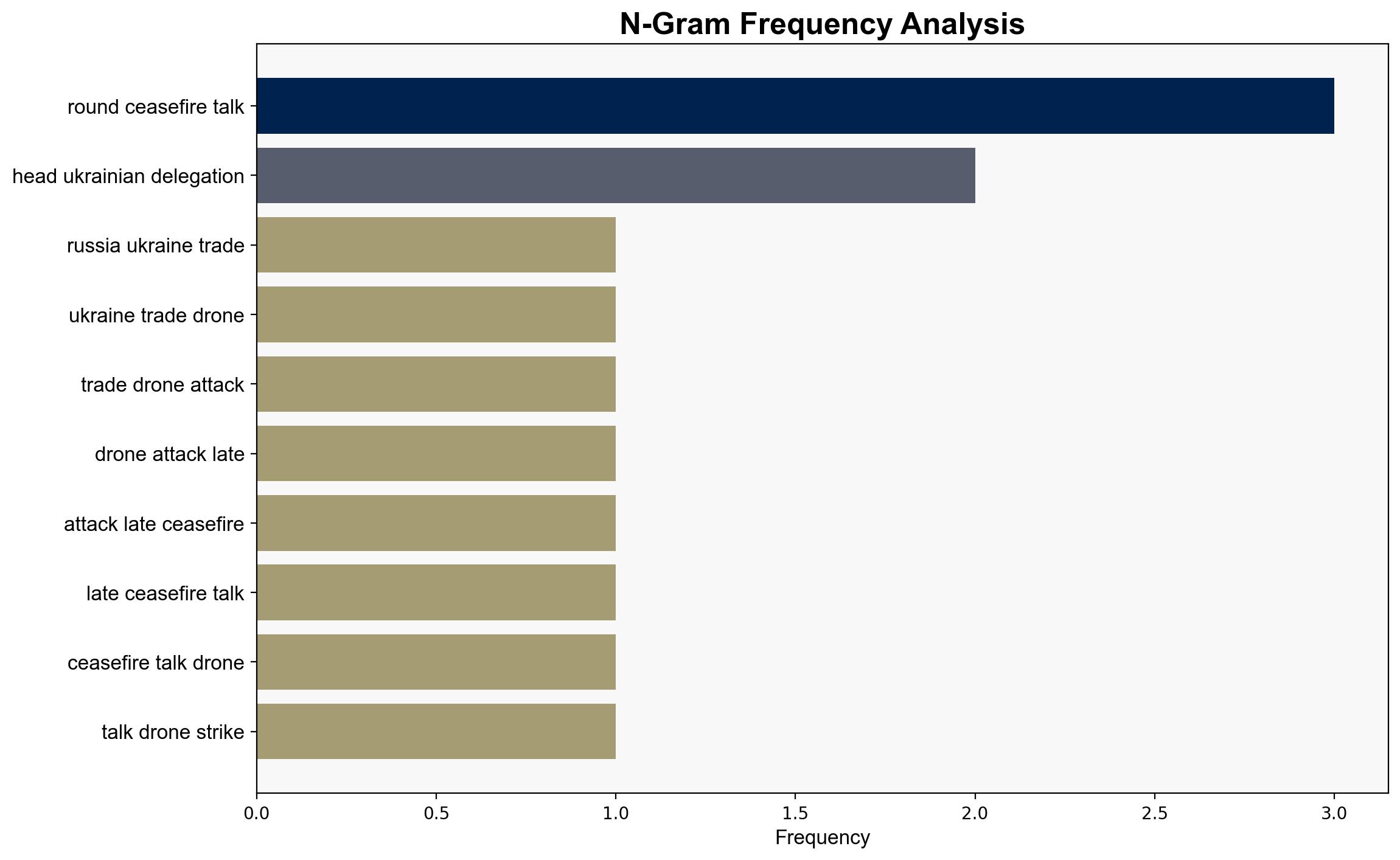Russia and Ukraine trade drone attacks after latest ceasefire talks – BBC News
Published on: 2025-07-24
Intelligence Report: Russia and Ukraine trade drone attacks after latest ceasefire talks – BBC News
1. BLUF (Bottom Line Up Front)
The most supported hypothesis is that the recent drone attacks by both Russia and Ukraine are strategic posturing to gain leverage in ongoing ceasefire negotiations. Confidence in this assessment is moderate due to the complex and fluid nature of the conflict. It is recommended to enhance diplomatic efforts while preparing for potential escalation in military engagements.
2. Competing Hypotheses
1. **Hypothesis A**: The drone attacks are retaliatory measures intended to undermine the ceasefire talks and demonstrate military strength. This hypothesis suggests that both sides are using military actions to signal their unwillingness to compromise on key issues.
2. **Hypothesis B**: The drone attacks are tactical maneuvers designed to gain leverage in negotiations, with both sides aiming to strengthen their bargaining positions without intending to derail the peace process entirely.
Using ACH 2.0, Hypothesis B is better supported as the attacks coincide with the timing of the talks, suggesting strategic posturing rather than outright rejection of negotiations.
3. Key Assumptions and Red Flags
– **Assumptions**: It is assumed that both Russia and Ukraine are still interested in a negotiated settlement despite the ongoing violence. This hinges on the belief that neither side can achieve a decisive military victory.
– **Red Flags**: The brief duration of the ceasefire talks and the immediate resumption of hostilities indicate potential insincerity in negotiations. The lack of significant progress in talks raises questions about the true intentions of both parties.
– **Blind Spots**: Limited insight into internal decision-making processes within the Russian and Ukrainian governments could obscure understanding of their strategic priorities.
4. Implications and Strategic Risks
– **Escalation Risks**: Continued drone attacks could lead to broader military escalation, drawing in regional actors and complicating diplomatic efforts.
– **Economic Impact**: Prolonged conflict may disrupt trade routes, particularly in the Black Sea region, affecting global markets.
– **Cyber Threats**: Increased tensions could lead to cyber operations targeting critical infrastructure in both countries and potentially beyond.
– **Geopolitical Dynamics**: The conflict’s persistence may strain relations between Russia and Western nations, impacting global diplomatic alignments.
5. Recommendations and Outlook
- Enhance diplomatic channels to facilitate dialogue and reduce the risk of miscalculation.
- Prepare contingency plans for potential escalation, including military and economic responses.
- Monitor cyber activities closely to preempt potential attacks on critical infrastructure.
- Scenario Projections:
- **Best Case**: Successful negotiations lead to a sustained ceasefire and gradual de-escalation.
- **Worst Case**: Escalation into a broader conflict involving regional powers.
- **Most Likely**: Continued sporadic violence with intermittent negotiations and limited progress.
6. Key Individuals and Entities
– Vladimir Medinsky
– Rustem Umerov
– Dmitry Peskov
– Volodymyr Zelensky
– Donald Trump
– Oleksiy Honcharenko
7. Thematic Tags
national security threats, cybersecurity, counter-terrorism, regional focus





